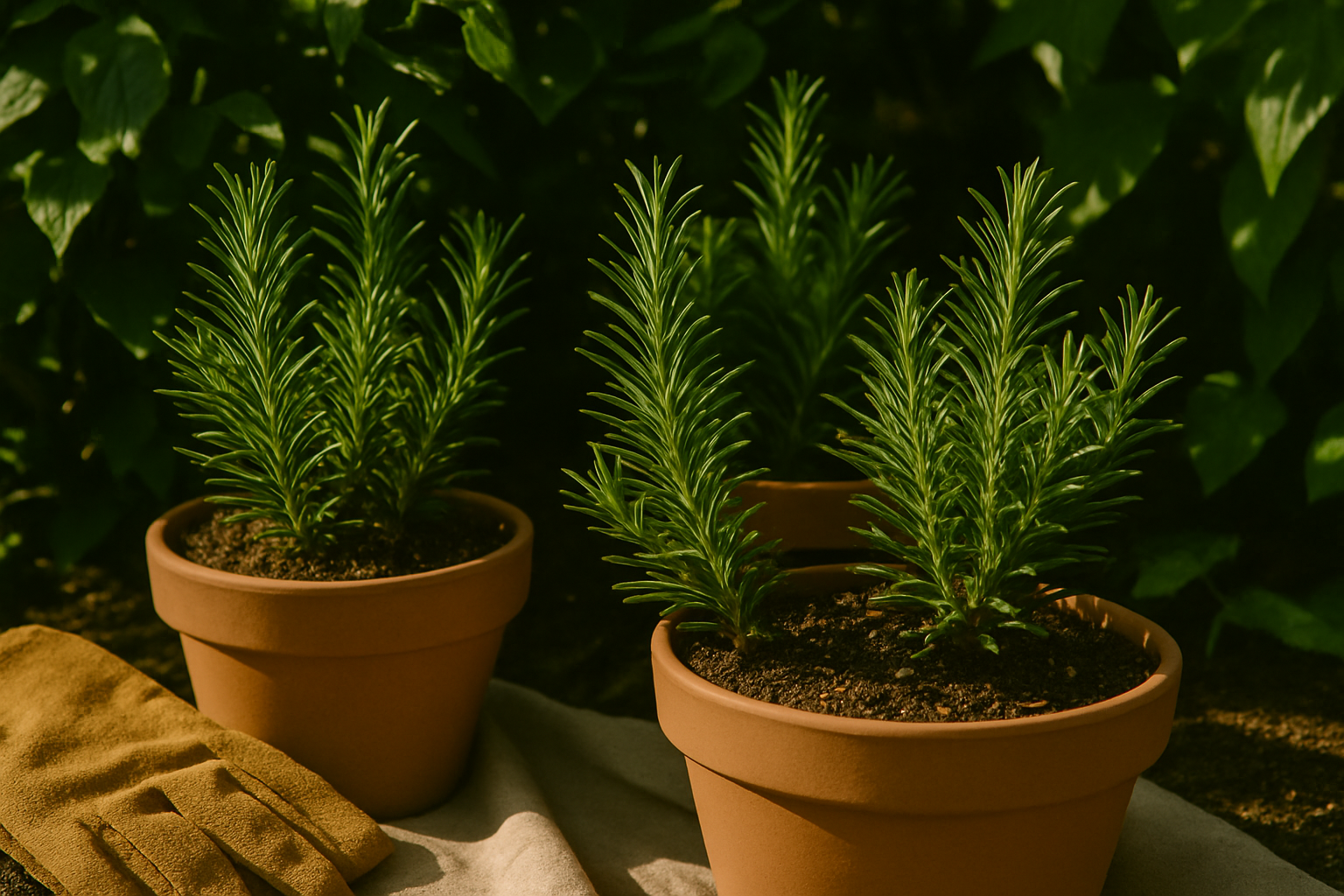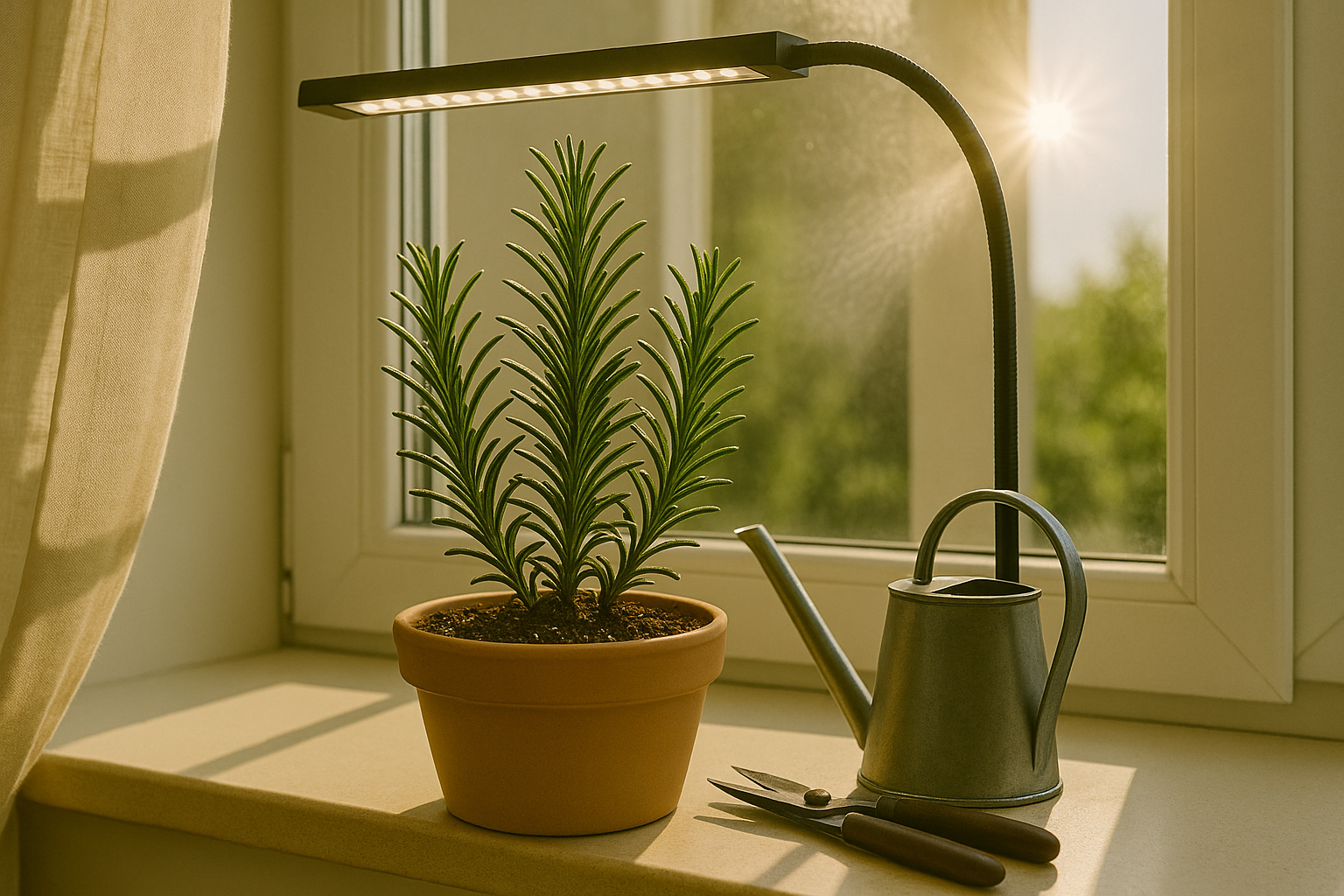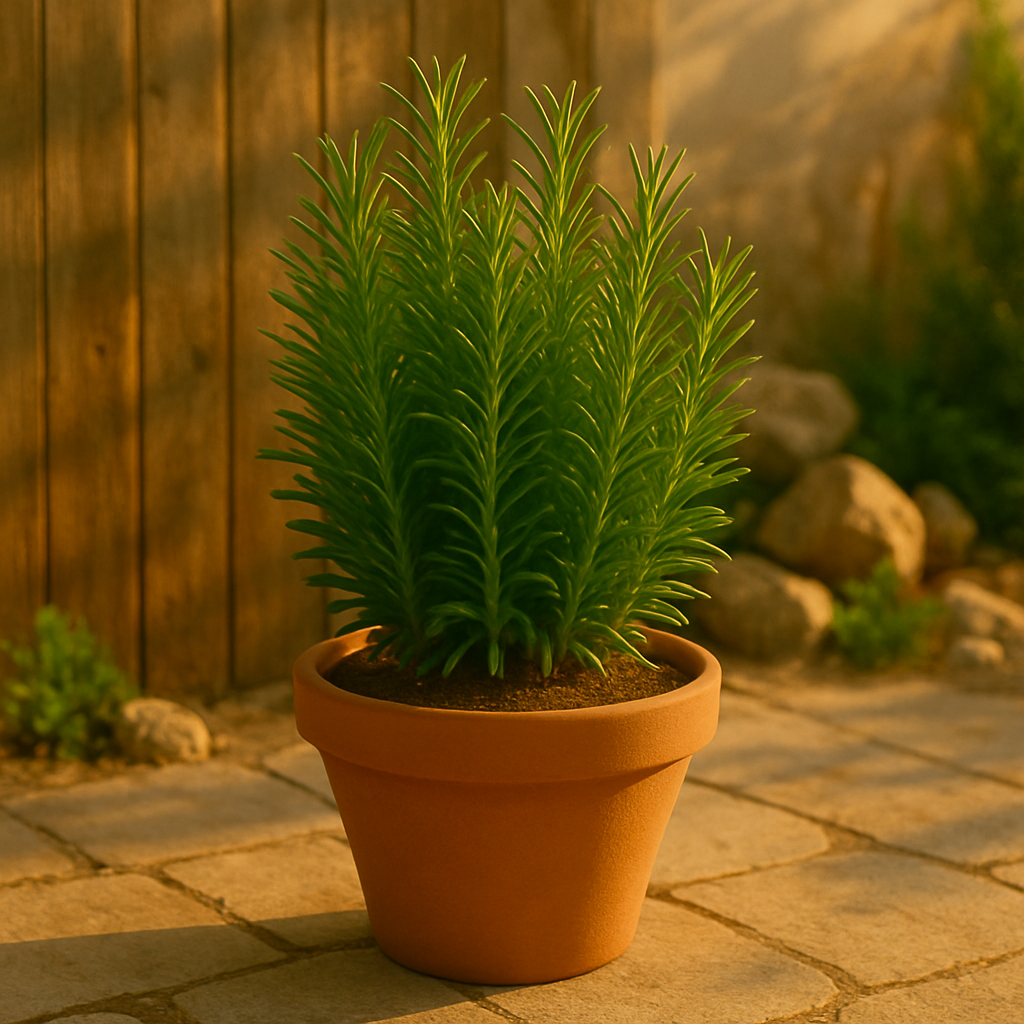Introduction
Understanding rosemary’s sun requirements is essential if you want your herb garden to thrive. If you’ve ever wondered whether rosemary needs full sun or shade, the answer is clear: rosemary loves plenty of bright light. This fragrant Mediterranean herb grows best when it receives at least six to eight hours of direct sunlight each day, making full sun a key factor in its success.
Whether your rosemary is planted in a garden bed, a container on a sunny patio, or even on your kitchen windowsill, the right amount of sunlight ensures its leaves stay fragrant, flavorful, and resistant to pests and disease. Indoors, placing your rosemary plant near a south-facing window can make all the difference, while outdoor plants should be positioned where they’re not shaded by taller plants or structures.
Skimping on sunlight leads to leggy growth and lackluster flavor, so understanding and meeting rosemary’s sun requirements is the foundation of healthy, productive plants. This post will clarify exactly how much sun your rosemary needs and offer practical tips to keep your herb thriving, no matter where you choose to grow it.
Understanding Rosemary’s Light Preferences

Rosemary comes from the sun-drenched slopes of the Mediterranean, and its heritage clearly shapes its love for sunshine in your garden or home. These hardy herbs evolved under cloudless skies and rocky soils, soaking up intense rays for hours each day.
For healthy, lush rosemary, “full sun” is essential—meaning your plant should receive at least 6 to 8 hours of direct, unfiltered sunlight daily. In practical terms, place rosemary in the brightest spot you have, where sunlight isn’t blocked by trees, fences, or nearby buildings.
In cooler regions with gentle summers, it’s almost impossible to give rosemary too much sun; the more it gets, the bushier and more flavorful it becomes. However, in areas where temperatures regularly rise above 90°F (32°C), intense afternoon sunlight can sometimes stress the plant, causing leaf scorch or slowed growth.
In these warmer climates, consider providing some relief: morning sun followed by filtered afternoon shade can keep your rosemary thriving without sacrificing its health or flavor. For example, placing a potted rosemary beside a lightly shaded patio or beneath the fringe of a taller plant can offer protection on extra-hot days.
If you’re growing rosemary indoors, position it directly in a south-facing window or supplement with a grow light to mimic Mediterranean brightness. Partial shade is occasionally acceptable, especially in extremely hot zones or where sun is limited, but keep in mind that prolonged low light will cause legginess or weakened flavor.
Ultimately, the more you can match its native conditions—plenty of sun, well-drained soil, and good air movement—the better your rosemary will grow, making it a resilient and aromatic addition to your kitchen or landscape.
Outdoor vs. Indoor Rosemary
When it comes to rosemary, light is a make-or-break factor. Outdoors, this hardy herb thrives in full sun, soaking up six to eight hours of direct light daily in garden beds or containers on patios. Planted outside, rosemary needs nothing more than a sunny spot and well-drained soil, and in most climates, it will reward you with vigorous, aromatic growth.
Indoors, however, the story changes. Windowsill rosemary can quickly get leggy or weak because most homes just don’t offer enough direct sun, especially in winter. If you’re growing rosemary inside, opt for a south-facing window, which receives the most light throughout the day. East- or west-facing windows can sometimes suffice, but watch out for tall trees, outdoor structures, or window screens that might reduce the sunlight even more.
During darker months, or if sunlight is limited, supplemental lighting becomes critical. LED grow lights placed just a few inches above the plant will fill the gap and keep rosemary dense and healthy. Remember, even the sunniest window usually provides only half the light rosemary would get outside. As daylight hours shorten in winter, indoor plants may need up to 12–16 hours of artificial light daily to stay robust.
Rotate your pots every week so all sides receive light evenly, and keep leaves dust-free to allow maximum sun exposure. Outdoors, rosemary naturally adapts to seasonal changes, but indoors, you’ll also need to monitor humidity—heated air can dry pots out faster.
By matching your indoor light setup as closely as possible to the intense sun rosemary craves outdoors, and making small seasonal adjustments, you’ll be rewarded with lush, fragrant sprigs all year round.
Recognizing Sunlight Stress
Understanding how much sunlight your plants need can make all the difference between thriving greenery and struggling stems. If your plant isn’t getting enough light, you might notice leggy, stretched-out growth as it reaches for any available rays. Leaves can look pale or washed out, and some fragrant herbs like basil or mint might lose their signature aroma—signs of weak development.
On the other hand, too much sun brings a whole different set of issues, especially in hot, dry climates. Look for scorched or crispy leaf edges, brown spots, wilting even when the soil is moist, or leaves that feel dry and brittle to the touch. These are classic symptoms that your plant is getting fried under excessive sun exposure.
Troubleshooting Low Light
Try moving your plant closer to a south-facing window or supplementing with grow lights for a few hours a day. Rotate pots regularly to ensure even access to available sunlight.
Addressing Too Much Sun
If you spot signs of too much sun, shift your plant to a spot with filtered light or provide some shade during peak afternoon hours—sheer curtains or outdoor shade cloth work well.
Pay attention to your plant’s gradual response after making changes, and adjust your approach if symptoms persist. By checking on your plants every few days and making small, simple adjustments—like rotating, relocating, or adjusting curtains—you’ll keep them healthy and resilient, no matter the weather outside.
Best Practices for Managing Rosemary Sun Exposure

Rosemary thrives with six to eight hours of direct sunlight daily, but managing that sun exposure can make all the difference—especially in hot climates or unpredictable weather. For potted rosemary, flexibility is key. Move the plant to a spot that receives morning sun and light afternoon shade if the heat is intense, such as hanging baskets under an awning or pots near a lightly shaded fence.
Garden-grown rosemary can benefit from a lightweight shade cloth draped loosely over the plant during peak afternoon sun. This helps prevent leaf burn without blocking all the light. Indoors, maximizing available sunlight is essential. Place rosemary in the brightest window, ideally south-facing, and rotate the pot every week to ensure even growth.
Don’t forget to clean windows regularly—dust and grime can reduce light by up to 30%, and that adds up over time. With sunlight comes heat, so be mindful of drying soil. Rosemary hates soggy feet but also doesn’t like bone-dry drought. Water deeply when the top inch of soil feels dry, letting excess water drain away, and check pots more often during heatwaves or after moving plants to sunnier spots.
To keep track, create a simple weekly checklist:
- Observe plant location and sun patterns
- Look for signs of scorching or legginess
- Rotate indoor pots
- Wipe down windows
- Check soil moisture
Adjust as needed—sometimes, just shifting a pot a few feet makes all the difference. By observing and responding to your rosemary’s needs, you’ll keep it lush, fragrant, and ready for all your favorite recipes.
Frequently Asked Questions & Quick Care Tips
Many people wonder if rosemary can grow in the shade. While rosemary thrives best in full sun—ideally six to eight hours of direct light daily—it can tolerate partial shade, though it may grow more slowly and produce fewer aromatic oils.
If outdoor sunlight isn’t an option, such as in apartments or during winter, rosemary can adapt to indoor life with the help of artificial grow lights. Choose LED grow lights designed for herbs, and position them about 6–12 inches above the plant; aim for 12–16 hours of supplemental light if natural sunshine is lacking.
Quick Tips for Easy Success
- Place rosemary in the sunniest spot you have.
- Rotate the plant regularly to ensure even exposure.
- Watch for leggy stems, which can signal insufficient light.
- If growing indoors, dust leaves so they can absorb light efficiently.
Every home is different, so pay attention to your rosemary’s leaves, growth rate, and overall health. Don’t be afraid to move the plant around or experiment with lighting until you see lush, fragrant foliage. Finding the perfect spot might take a little trial and error, but it’s well worth the effort for happy, thriving rosemary.
